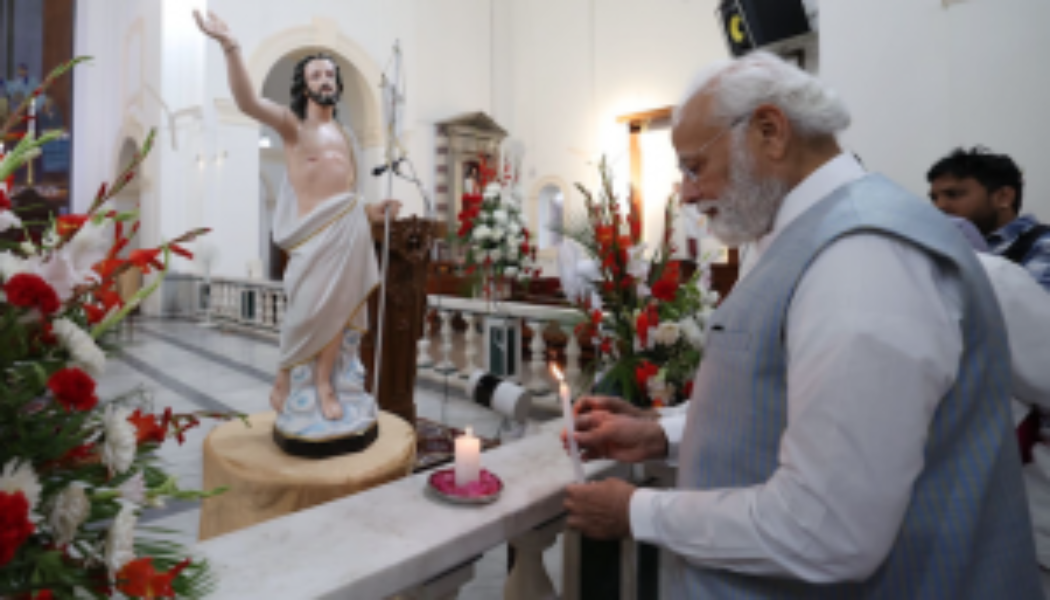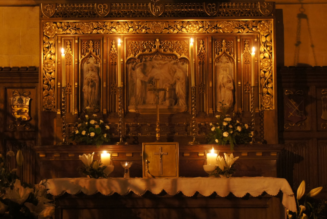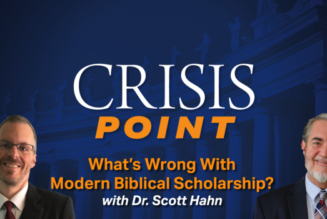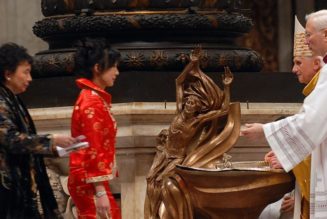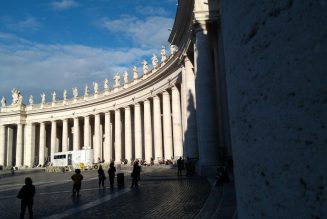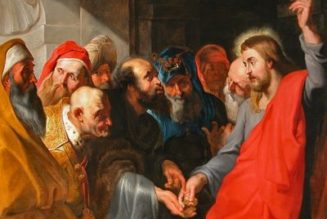
> Italiano
> English
> Español
> Français
> All the articles of Settimo Cielo in English
*
On Easter Indian prime minister Narendra Modi did something unexpected. He visited the Catholic cathedral of New Delhi. Welcomed by the archbishop, he lit a candle in front of a statue of the risen Christ, visited with the faithful, planted a tree in the garden, and called for “harmony in our society.”
A few days earlier Modi had also met with the head of the Malankara Orthodox Syrian Church. And on Easter other leaders of the Bharatiya Janata Party, BJP, the Hindu party in power, visited churches in Kerala, the Indian state where Catholics have the strongest presence.
Cardinal George Alencherry, major archbishop of the Catholics of the Syro-Malabar rite, enthusiastically commented on Modi’s gesture. “A good leader,” he said, “really open and welcoming.” With him and with his party, Christians “do not have any insecurity.”
But is that the case? Not by the look of it. During the same days of Holy Week and Easter, the diocese of Jhabua, in Madhya Pradesh, was forced to ask for police protection against attacks by Hindu extremists, who do not tolerate the Catholic schools set up by the diocese for outcaste and tribal children, which according to them are places of forced conversions.
In another diocese of Madhya Pradesh, that of Jabalpur, Bishop Gerald Almeida is under threat of arrest for a similar reason. And these are only the latest episodes of a widespread hostility against religious minorities, on the part of the most fanatical sectors of Hinduism and of the support given to them by the institutions. The president of the Commission for Protection of Child Rights, Priyank Kanoongo, relentless in keeping Catholic schools under fire, came up through the Rashtriya Swayamsevak Sangh, RSS, a historical ideological hotbed of Hindu nationalism.
The “offense” of Catholics in India, where caste discrimination, although abolished by law, is still an important factor, is above all that for the most part they belong to the lower castes, to the outcastes, to the tribals, and that they work on behalf of precisely these humbler classes. Even the bishops come ever more often from these ranks.
But what unleashes the intolerance is above all conversions, although these are very small in number. Hindu fundamentalists look on them as the plague, and for several years they have received support from “anti-conversion” laws, already approved in a dozen states. What are supposed to be punished are conversions carried out by force or deception, but the vague terms allow for very extensive charges and sentences. Even the Missionaries of Charity, the meek nuns of Saint Teresa of Calcutta, have been hit repeatedly with this ruthless law. Which is instead very magnanimous with those who take the opposite path and reconvert, who are awarded certain benefits.
There are 27 million Christians in India, 2 percent of the whole population of 1.4 billion, a third them Catholic. And in spite of the peaceful image generally associated with the Hindu religion, Christians there are even among the most persecuted in the world. With violence of all kinds, schools attacked, churches vandalized, villages set on fire, which the latest report by Aid to the Church in Need has quantified as 279 cases in 2020, 505 cases in 2021, and 302 cases in the first seven months of the 2022, and so continuously on the rise.
But curiously very little is said about this by the upper echelons of the Church. On October 30 2021 Prime Minister Modi was received at the Vatican by Pope Francis. Fifty-five minutes of discussion, summed up in the final communiqué in just these meager words: “During a brief conversation, the cordial relations between the Holy See and India were discussed.” Modi reported that he had invited the pope to India. Nothing else.
It is true that for the Catholic hierarchy of India this is not a happy time. Last February 8 Francis received the former bishop of Jalandhar, Franco Mulakkal, who was acquitted in court of the charge of abusing a nun. Yet the pope has not reinstated him in the diocese from which he had removed him in 2018, or in another office.
Last summer, another bout of turbulence hit Cardinal Oswald Gracias, archbishop of Mumbai and a member of the council of nine cardinals who assist the pope in governing the universal Church. In a phone call that was leaked to the media, Gracias tried to convince the bishop of Mysore, Kannikadass William Antony, suspected of having had children by four lovers, to take a paternity test in a Catholic hospital, so as to “control” the doctors and the media, as “indicated by Rome.” From Rome, in reality, on January 7 the order came that the bishop of Mysore must leave the diocese and refrain from ministry.
Moreover, there is a severe state of unease within the Syro-Malabar Church, among the oldest in India, with 5 million faithful. There have been rebellions by sectors of the clergy against Cardinal Alencherry, accused of corruption in the sale of land belonging to the archdiocese. There have been cases of suicide by a woman in the novitiate and a priest. And above all there has still been no resolution to the head-on clash between the supporters of a “Latinizing” reform of the rite of the Mass, approved by Rome, and the defenders of the ancient tradition.
But even with its faults, the Syro-Malabar Church in India is also being tested by fire, subjected as it too is to the martyrdom of all Indian Catholics. And all this amid the silence of the Church of Rome.
A silence that also falls on other persecutions of Catholics, in other countries. As in China. As in Nicaragua. In these cases, the justification given is political: it is not appropriate to publicly contest those in power, at the risk of worse retaliation.
But in India, which is called “the largest democracy in the world?” The current narrative blames the persecutions on groups of fanatics. But this is not the reality. It is also made up of laws and sentences. In India there are cohorts of magistrates, administrators, government men, lawyers, associations that are a substantial part of this oppression of “foreign” religions. All the way up to the nationalist BJP party and the prime minister, who are counting on winning the elections again in 2024. On Easter Modi made a visit to a church. Gagging the pope all the more.
.
